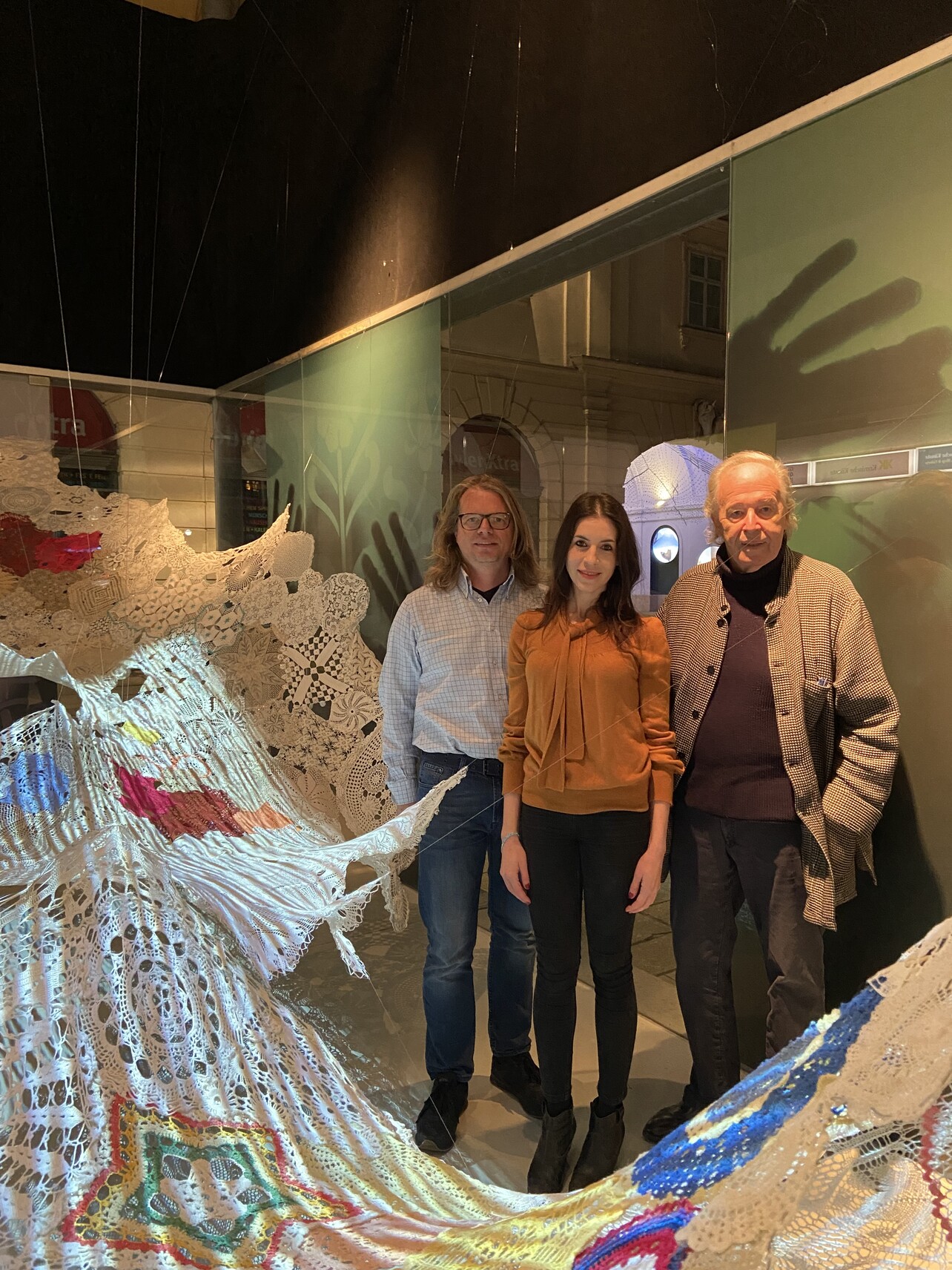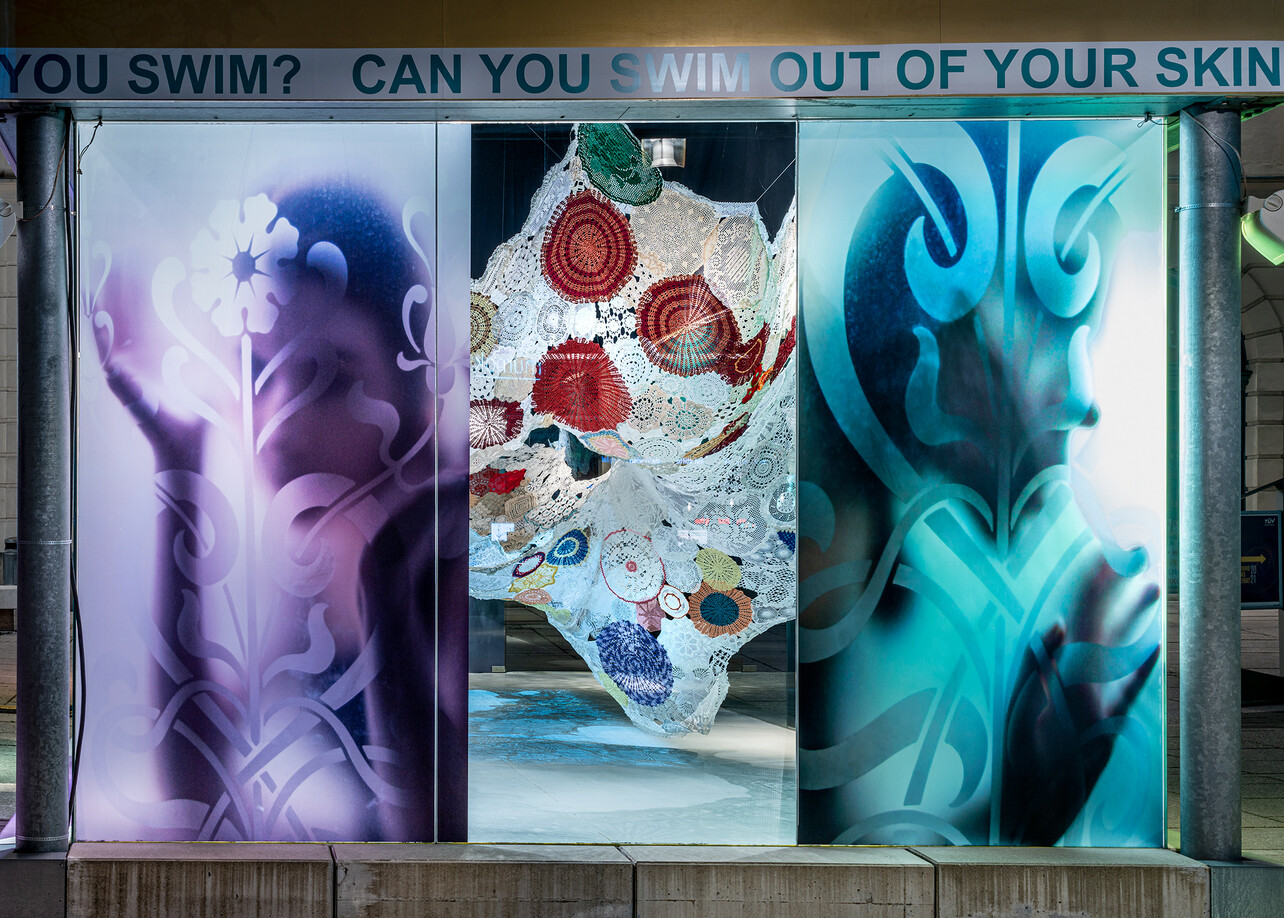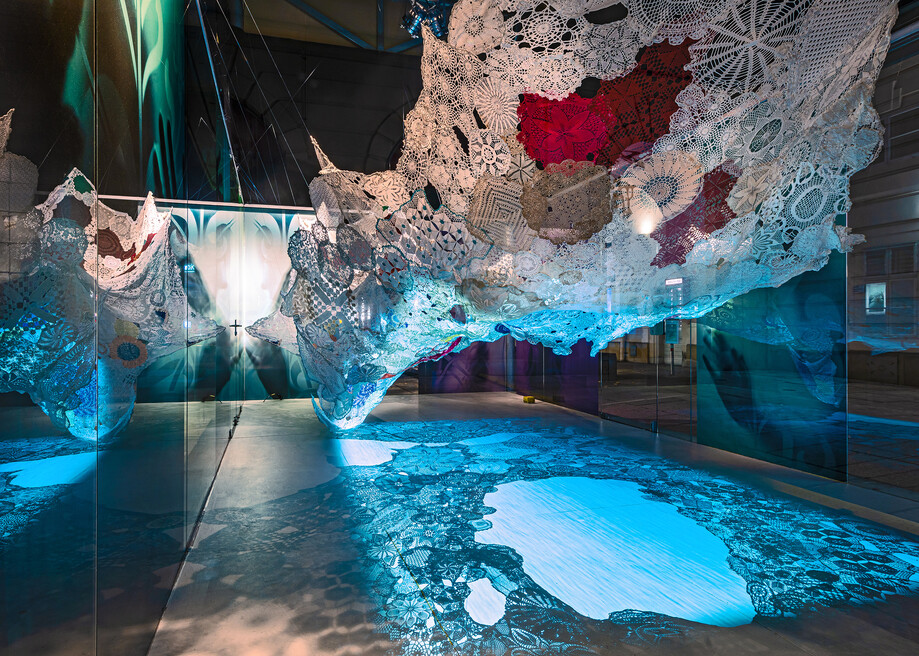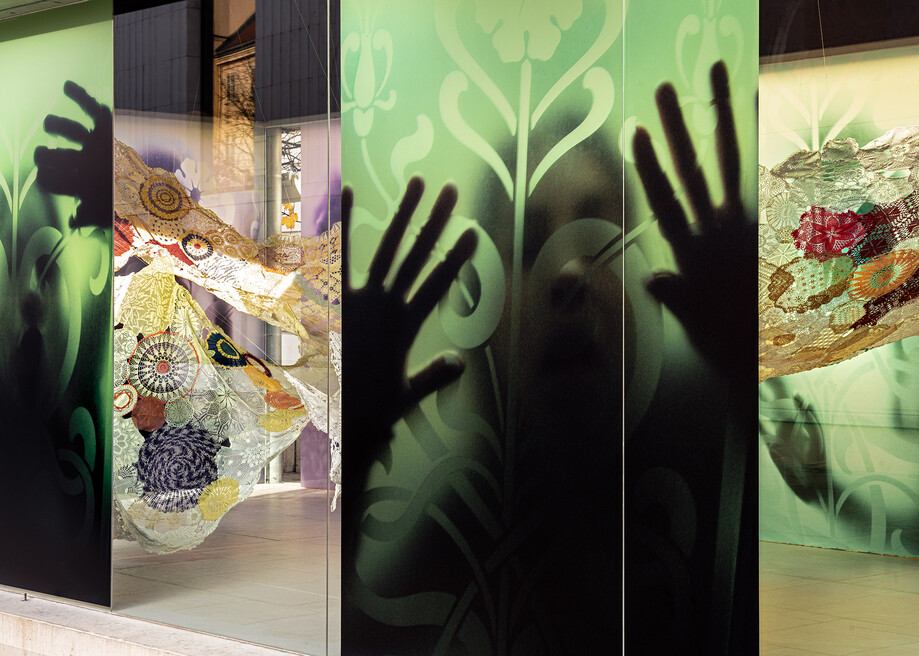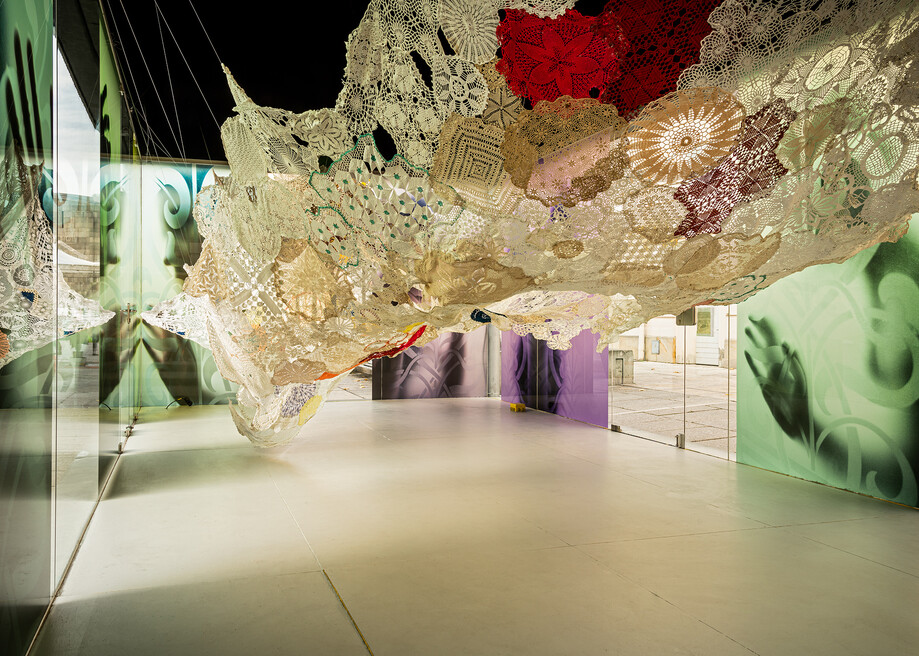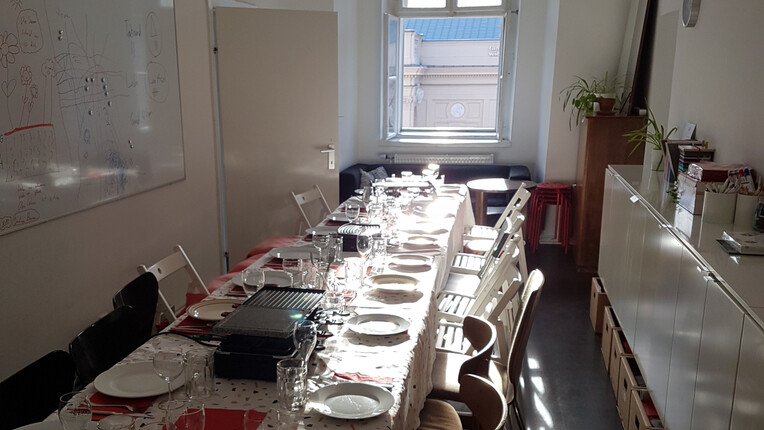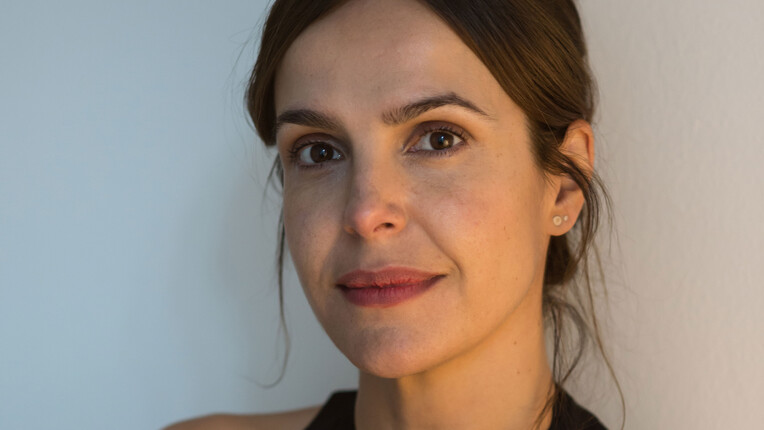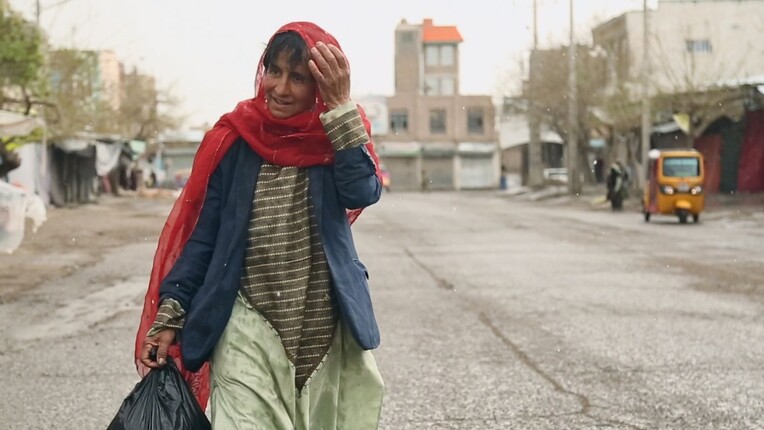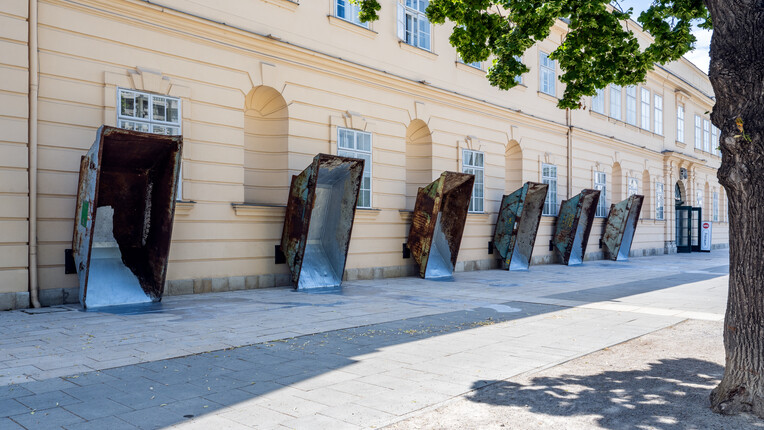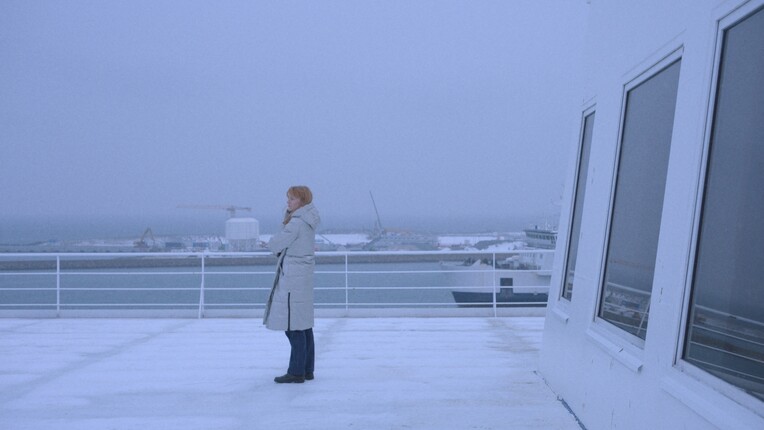![[Translate to English:] [Translate to English:]](/fileadmin/_processed_/8/f/csm_MQ-Artbox_Eva-Petric_Foto_C_Koller_07_10838d66b2.jpg)
Can you swim, Mr Podrecca?
In this interview for Impuls, austrian architect Boris Podrecca summarises the work of slovenian artist Eva Petrič. Currently she displays "Can you swim?" at MQ Art Box. Furthermore Podrecca talks about the role of art in public space and the limitations that this reveals to him in his architectural work.
In her MQ Art Box exhibition 'Can you swim?', the artist Eva Petrič examines our ability to swim - in a world where the boundaries between different forms of our environment are fluid.
The Austrian architect Boris Podrecca has known the Slovenian artist since her childhood. In this interview for Impuls, he summarises the role her work plays in the public space and the limitations that this reveals to him in his architectural work, which art can simply disregard.
You've known Eva Petrič since her beginnings as an artist in 2007, and have often discussed art in general and her own projects in particular with her.
Eva's art takes more of an introspective, auto-contextual stance, rather than a dialogical, site-dependent one. This is also apparent in her current intervention at MuseumsQuartier, where she wanders through phenomena of a global time and - as she herself says - addresses universal laws of nature from both pre- and post-human phases through self-reflection.
In her current installation 'Can you swim' at the MQ Art Box, Eva points out that there are no real boundaries between different species, no boundaries between diverse forms of our environment, no boundaries between water and air, no boundaries between bacteria and humans, no boundaries between people. We all make up Gaia, the living planet.
Throughout her work there is a claim to eternity, infinity, an almost cosmological stance that is perceivable in both the translucent cube encasement and the textile, undulating interior intervention. We are all swimming, as she herself imagines it, in an ocean of bacteria that already grows in new-borns, in which a constant interaction between microbes and the immune system occurs. In the midst of the diversity of germs, water, and air.
Since the 18th century, we have locked art up in urban vaults, museums, and in doing so have 'auraticised' it. In this respect, art in the public space is a liberation for civil society; art is among us.
In the last thirty years, analogous to the classical cultures of Egypt, Greece, the Roman Empire or Arabia, the conquest of urban space through the placement of art has been revived. Michelangelo placed his best works in the public space. Duchamp wrapped his Venus and put it on display without anyone but him knowing what the textile covering concealed. In contrast, Christo wrapped the Arc de Triomphe - which everyone knew before he wrapped it - without mystery. You see the scope of an analogous theme in this example.
Also 'Can you swim?' is being shown in the MQ Art Box, a transparent artistic space open to the public.
The pandemic, however, has upset the rashness and non-binding nature of our society. The survival strategies of an elbow society have been undermined; while aware of this liquid state, the direction is nonetheless vague and aimless, but it can certainly be poeticised.
It is for this reason that the question also arises as to whether art has the function of giving people hope, or whether it should primarily expose wrongdoing in society.
To this I would say that linking the term hope with the definition of art is all too eschatological for me. In other words, the relationship of art to mental hygiene has always been ambiguous. The boundaries of art between disruption and construction have become relative and are reflected in the respective interventions in the public space. Admittedly, Eva's Corona Rose (ed.: in Vienna's St. Stephen's Cathedral) is a prop of hope, but it is swirled through an apocalyptic space.
And what is the intention of the exhibition "Can you swim?" at MQ?
As a generator and communicator of diversely conceived art for a wide public and for the younger generation in particular, MuseumsQuartier is in many ways unique within Central Europe. As a vibrant platform of encounter, MQ manages to bring art to the public and the public to art.Eva's work also fulfils both aims. Today, however, the flood of information, the disconnected views, is adrift with superficial or secondary knowledge, as George Steiner shows us.
The provision of services, the carrying out of financial transactions, of efficiency, rationality and their claim to totality, are relativised by art in public space, and the topoisation of the city texture is enriched by the disassociation of anachrony, even anarchy.
As an architect, I cannot go that far; I am limited by pragmatic constraints such as the context of the location, the specific relief of the square, the cultural materiality of the square, the swale, mobility, greenery, lighting, water, etc. The extended, narrative action on the public tableau, then, is incumbent on art. Here one sees the diversity of categorisations such as urban collisions, multilocality, performative processes, protest choreography or, as in Eva Petrič's case, her reflexive implants. The question is if their compatibility with the open space clarifies the intended message, whereby the viewer always remains sovereign.
That is certainly the case with Eva's project 'Can you swim?'.
With her creative intensity and obsession she invites us to swim with her through her world. But I would recommend she do the backstroke, where breathing and movement occur in concert, and you constantly have the horizon under control.
Thank you very much for the interview.
The interview was conducted by Ann Cathrin Frank.
Currently Eva Petrič collects laces for further artworks. For donation please contact her via evapetric@hotmail.com .
About Eva Petrič:
Born in Slovenia (1983), she lives and works between New York City, Vienna and Ljubljana. Eva works in the medium of photography, video, performance, installation, sound and literature. In the US Eva is represented by Galerie Mourlot, New York. She holds a BA in Psychology and Art and a Master of Fine Arts. Her work has been shown at over 70 solo and 118 group exhibitions worldwide, and has received numerous recognitions and prizes.
Even before the current pandemic, Eva Petrič often chose public spaces instead of galleries to present her art. These ranged from churches (St. Stephen's Cathedral in Vienna, St. John the Divine Cathedral in New York City) to shopping malls (Centro Cultural Borges in Buenos Aires) to subway stations (Karlsplatz and Schottentor in Vienna) and subway caves (Postojna Caves in Slovenia). Currently, in direct relation to the Covid 19 pandemic, her Corona Rose has been spreading hope from the wall of St. Stephen's Cathedral since October 2020.
